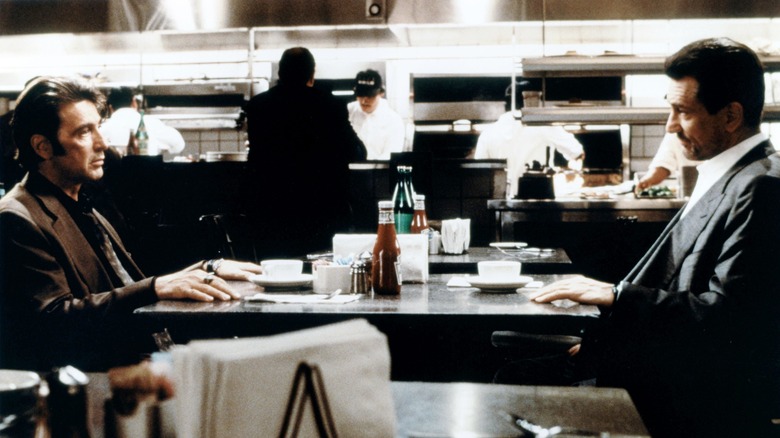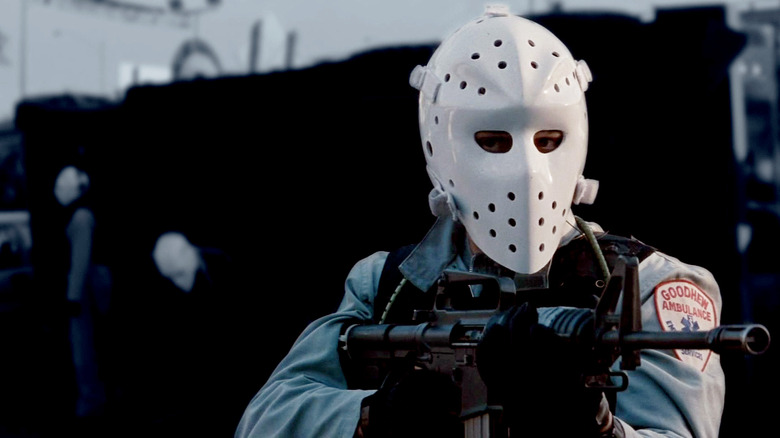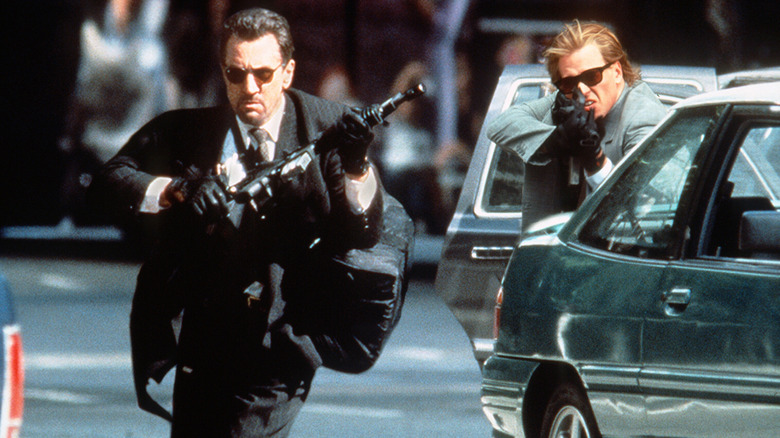Michael Mann Went To Some Exhaustive Lengths While Doing Research For Heat
There is much ballyhoo surrounding the way actors prepare for their roles. Known as method acting, or simply "the Method," this popular process requires actors to draw on similar experiences to better relate to the character they are playing. It is an exhaustive process that can take a toll. Kate Winslet said it took her months to recover from playing a Nazi in "The Reader." Christian Bale lost so much weight for "The Machinist" the studio had to intervene. Rachel Lefevre even pretended to be a cat for "Twilight."
But actors aren't the only ones going to great lengths to prepare for a film. What about directors? The auteur theory states that the director is the sole author of a film, responsible for a movie's look, performance, and meaning. And while filmmaking is a collaborative effort, much of a film's success (or failure) is most often attached to the director. While the method might last weeks or even months for actors, directors might spend much longer in preparation for a film. In the case of the 1995 film "Heat," director Michael Mann spent years preparing for the production.
It involved casing a bank for a robbery
The crime thriller starring Robert De Niro and Al Pacino was written and directed by Mann. The movie is a sprawling narrative, clocking in at 170 minutes, chronicling the relationship between a Los Angeles detective Vincent Hanna (Pacino) and a career criminal Neil McCauley (De Niro). "Heat" is loosely based on an actual 1960 case and Chicago detective Chuck Adamson's relationship with McCauley.
It is Adamson that gave Mann the idea for the film. He worked with Mann as an advisor and told him about his implausible relationship with the real-life criminal Neil McCauley. Mann was so enamored by the complex relationship between the two, he began developing the concept for the film.
According to Esquire, Mann spent years preparing for "Heat," including putting himself in harm's way. Every Friday and Saturday for nine months he would do ride-alongs with an LAPD officer, answering calls from 9 p.m. to 2 a.m. Mann was friends with Adamson, but what about McCauley, who was killed in a shootout with Adamson's team years earlier? To get a sense of Neil McCauley, Mann visited Folsom State Prison to speak to inmates that were close to McCauley. He also worked to prepare his actors. He arranged for Ashely Judd, who played the wife of one of McCauley's crew, to meet women who turned to prostitution while their husbands were in prison. The preparation paid off. In describing the cast performance, Mann said:
"There's no performance. We were all so into character. You were the movie as well as the individual character."
In what could only be described as "method directing," Mann took things to the next level to maximize the realism of a bank heist scene in the movie. Mann joined De Niro, Val Kilmer, and Tom Sizemore in casing an actual bank for a robbery. Mann claims they entered the bank with unloaded weapons (only the security guards knew) and secretly plotted a heist that would never actually happen.
The results of Mann's method would set a new standard for crime dramas.
'The single greatest Los Angeles crime epic of all time'
While "Heat" failed to win any Academy Awards, it remains a revered film to this day. Its influence is widely felt throughout modern cinema. Mann never wavered in his efforts to tell the unlikely story of the cop and criminal; two obsessive men hell-bent on outwitting one another while finding a mutual respect.
It was Mann's own obsession that saw the project all the way to become a Hollywood production. Before it was a film, "Heat" was a failed television pilot. It makes sense as Mann got his start in television, working on shows such as "Starsky & Hutch" and "Crime Story" before becoming an executive producer on "Miami Vice." He had the opportunity to produce a pilot for NBC and reworked the "Heat" script for television. NBC passed on the series but aired the episodes as a TV movie, "L.A. Takedown." The movie would turn out to be a dry run for "Heat."
After the success of Mann's 1992 film "The Last of the Mohicans," the door was finally open to produce "Heat" as a feature film. After a decade of honing his skills through popular crime series on television and years of intense research, Mann directed a profound and influential neo-noir. "Heat" is a stylistic study of human nature and relationships, an authentic examination of obsession, loneliness, and begrudging respect between foes. The aberrant real-life relationship and meeting between Adamson and McCauley led to one of cinema's most memorable scenes.
Noted critic Roger Ebert called the film "The single greatest Los Angeles crime epic of all time." It took a while for Mann to make "Heat" but it was certainly worth the wait.


